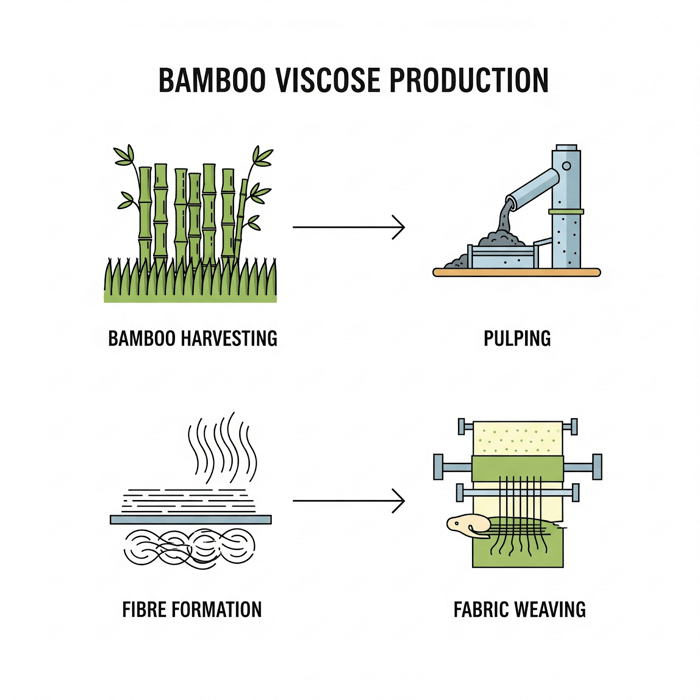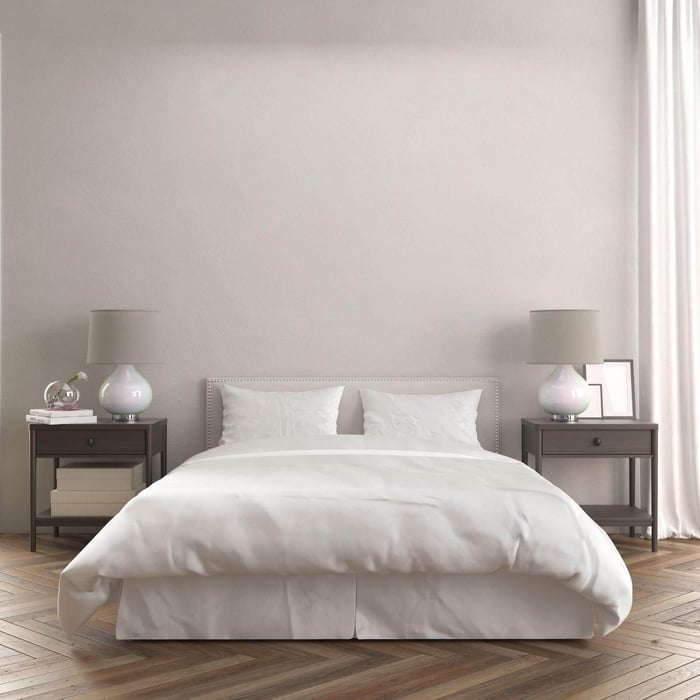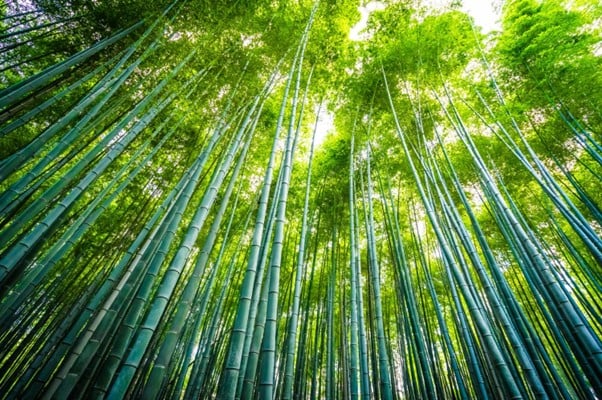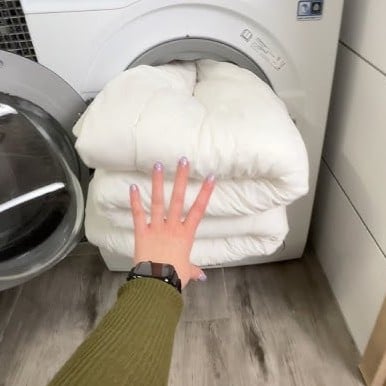Table of Contents
- What Is Bamboo Viscose Made From?
- Why Is Bamboo Viscose So Popular?
- The Environmental Impact of Bamboo Viscose
- Is Bamboo Viscose Sustainable?
- Bamboo Viscose vs Other Fabrics
- How to Tell If Bamboo Viscose Is Responsibly Made
- How to Care for Bamboo Viscose
- Common Aspects of Bamboo Viscose to Understand
- Final Thoughts
Bamboo viscose has steadily gained popularity in wardrobes, bedrooms, and eco-conscious households. Marketed as a sustainable and luxuriously soft fabric, it appeals to those seeking comfort with a conscience. While its natural origins are clear, understanding its journey from plant to fabric helps us appreciate its unique qualities.
Let’s break down what bamboo viscose is, how it’s made, and how it stands out among other fabrics.
What Is Bamboo Viscose Made From?
Often referred to as bamboo rayon or regenerated bamboo, is a fabric derived from the cellulose of bamboo plants. It begins with a truly natural raw material, fast-growing bamboo, and undergoes a transformation process to create the incredibly soft fibres we know and love. This process, which involves natural steps, helps unlock bamboo’s inherent softness and breathability.
Key steps in bamboo viscose production:
- Harvesting: Bamboo stems and leaves are harvested from fast-growing bamboo species, a highly renewable resource.
- Pulping: The plant material is crushed and treated, often with a solution like sodium hydroxide, to create a viscous pulp. This step is crucial for breaking down the bamboo into its usable cellulose form.
- Fibre formation: This pulp is then carefully extruded through spinnerets, much like creating a continuous thread, which are then solidified and spun into yarn.
- Fabric weaving: The yarns are finally woven into the soft, breathable fabric, ready for textile use.
While the process involves refinement, it fundamentally starts with the natural bamboo plant, bringing its excellent properties to the finished fabric.

Why Is Bamboo Viscose So Popular?
Understanding what bamboo viscose is helps explain its widespread appeal. It brings together unparalleled softness, impressive performance, and elegant style, making it an ideal choice for bamboo bedding, baby wear, and nightwear.
Key reasons for its popularity:
- Unmatched softness: Often compared to silk or high-thread-count cotton, it offers a luxurious feel against the skin.
- Exceptional breathability: It naturally regulates body temperature and allows excellent airflow, keeping you comfortable.
- Moisture-wicking properties: It efficiently pulls sweat away from the skin, helping to keep you cool and dry.
- Hypoallergenic qualities: It's gentle on sensitive skin and often suitable for allergy-prone individuals.
- Fluid drape: The fabric naturally falls beautifully on the body, making it great for fashion and bedding alike.
If you’re looking for practical examples of bamboo viscose in use, Lost Loom’s cooling bamboo bedding offers insight into how well it performs in real sleeping conditions, delivering comfort night after night.
The Environmental Impact of Bamboo Viscose
Bamboo itself is an incredibly sustainable plant, growing quickly and requiring minimal water, fertilisers, or pesticides. Its rapid growth makes it a highly renewable resource. The transformation of bamboo into viscose, like many manufacturing processes, has environmental considerations that vary significantly depending on the production methods used.
Points to consider regarding production impact:
- Chemical usage: The process can involve chemicals like sodium hydroxide, which is used to break down the bamboo. Responsible manufacturers manage these chemicals carefully to minimise environmental impact.
- Pollution risks: In factories with less stringent regulations, chemicals could potentially impact water sources. However, leading manufacturers are committed to advanced wastewater treatment and emission control.
- Sustainable sourcing: The demand for bamboo means it's crucial to source bamboo from well-managed forests, avoiding deforestation.
- Closed-loop systems: The most sustainable production methods utilise closed-loop systems, where solvents are captured and reused rather than released, significantly reducing environmental impact.
While the raw bamboo source is undoubtedly renewable, responsible manufacturing practices make all the difference in the overall environmental footprint.
Is Bamboo Viscose Sustainable?
The sustainability of bamboo viscose significantly depends on how the fabric is produced. When made using closed-loop systems, bamboo viscose can be a truly eco-conscious option. In these advanced systems, chemicals are efficiently captured and reused, preventing them from being released into the environment.
Sustainability depends on:
- Factory regulation: Ethical factories adhere to strict regulations, limiting emissions and treating wastewater to high standards.
- Certifications: Trustworthy products often carry certifications like OEKO-TEX® and FSC®, which provide independent verification of responsible practices.
- Alternative fibres: Innovations like bamboo lyocell (processed similarly to TENCEL™) represent even more advanced closed-loop methods, offering enhanced sustainability.
Lost Loom’s commitment to sustainable fabrics is a good example of how brands can uphold eco-friendly values while offering high-quality textiles, ensuring their bamboo products meet rigorous environmental standards.
Bamboo Viscose vs Other Fabrics
When comparing materials for comfort and environmental impact, here’s how it stacks up against some common alternatives.
Comfort
Bamboo bedding is noticeably softer than cotton, which can vary in texture and retain heat. It’s also smoother and more breathable than polyester, which often traps warmth and moisture. While linen is breathable, it can feel coarse, even after washing. Bamboo sheets combine cooling airflow with a luxuriously soft, silky feel that’s gentle on sensitive skin.
Sustainability
Bamboo is one of the fastest-growing, low-impact crops, requiring no irrigation, fertilisers, or replanting. In contrast, cotton uses large amounts of water and pesticides, and polyester is made from non-renewable fossil fuels. Linen is more sustainable than cotton and polyester, but still requires more land and water than bamboo.
Processing Impact
Bamboo viscose does involve chemical processing, but many manufacturers are moving toward safer, closed-loop systems. Polyester production is highly energy-intensive and polluting, while cotton’s processing involves heavy water use and bleaching. Linen has a relatively low processing footprint, but bamboo’s rapid renewability and biodegradability still give it a meaningful edge when responsibly made.
Bamboo bedding truly shines in terms of comfort, offering a luxurious feel. When produced responsibly, its sustainability credentials are very positive, making it a thoughtful choice for those seeking both comfort and mindful consumption.
How to Tell If Bamboo Viscose Is Responsibly Made
Not all bamboo fabrics are created equal. To identify ethically made bamboo viscose, it’s best to look for transparency and third-party certifications. These labels assure you that the product meets certain environmental and social standards.
Look for:
- OEKO-TEX® certification: This ensures the fabric is free from harmful substances, verifying its safety for human use.
- FSC®-certified bamboo: This verifies that the bamboo itself was harvested from responsibly managed forests, promoting biodiversity and protecting ecosystems.
- EcoVero™ labelling: This indicates a more sustainable viscose, often with lower emissions and better water management.
If you're still curious about how bamboo fibres compare to other natural options, a side-by-side comparison of bamboo vs cotton can help clarify their distinct advantages.
How to Care for Bamboo Viscose
Because of its exquisite softness and absorbency, bamboo bed sheets benefit from gentle care. Preserving its quality will also help reduce waste and extend the life of your beloved bamboo products.
Care instructions:
- Wash at 30°C or on a delicate cycle to protect the fibres.
- Use a mild detergent without bleach or harsh enzymes, which can damage the fabric.
- Avoid tumble drying; instead, air-dry flat or on a line to maintain its shape and softness.
- Iron on low heat if needed, ideally while slightly damp.
- Don’t wring; this can stretch and damage the delicate fibres.
For more detailed guidance, always follow Lost Loom’s bamboo product care instructions to ensure your items remain in pristine condition.
Common Aspects of Bamboo Viscose to Understand
While bamboo viscose is celebrated for many reasons, it's helpful to understand a few common points.
Things to be aware of:
- It’s a regenerated cellulose fibre: While it starts with 100% natural bamboo, the process transforms the plant material into a new fibre, much like how wood pulp is transformed into other fabrics. This transformation is what gives it its unique properties.
- Natural properties are enhanced for fabric: While bamboo plants have natural antibacterial qualities, the fabric's primary benefits lie in its softness, breathability, and moisture-wicking capabilities, which are enhanced through the production process.
- Sustainability varies by production: The eco-friendliness of bamboo viscose truly comes down to the manufacturing process. Choosing products made in closed-loop systems with certifications is key for the most sustainable option.
Understanding these aspects helps consumers choose fabrics based on facts and appreciate the journey from plant to luxurious textile.
Final Thoughts

Knowing what bamboo viscose is empowers people to make thoughtful choices. While it delivers unmatched softness, comfort, and style, its journey from plant to fabric is an interesting one. As a fibre derived from a highly renewable natural source, its sustainability largely hinges on responsible manufacturing practices.
To shop responsibly:
- Choose certified products (OEKO-TEX®, FSC®, EcoVero™) for peace of mind.
- Support brands with clear sourcing and production standards, like Lost Loom.
- Prioritise quality over quantity, and care for your fabrics properly to maximise their lifespan.
Lost Loom thoughtfully curates bamboo bedding like duvet covers, pillowcases, and woven throws made with sustainability and comfort in mind. Explore their full bamboo bedding range to invest in pieces that are as ethical as they are elegant.





